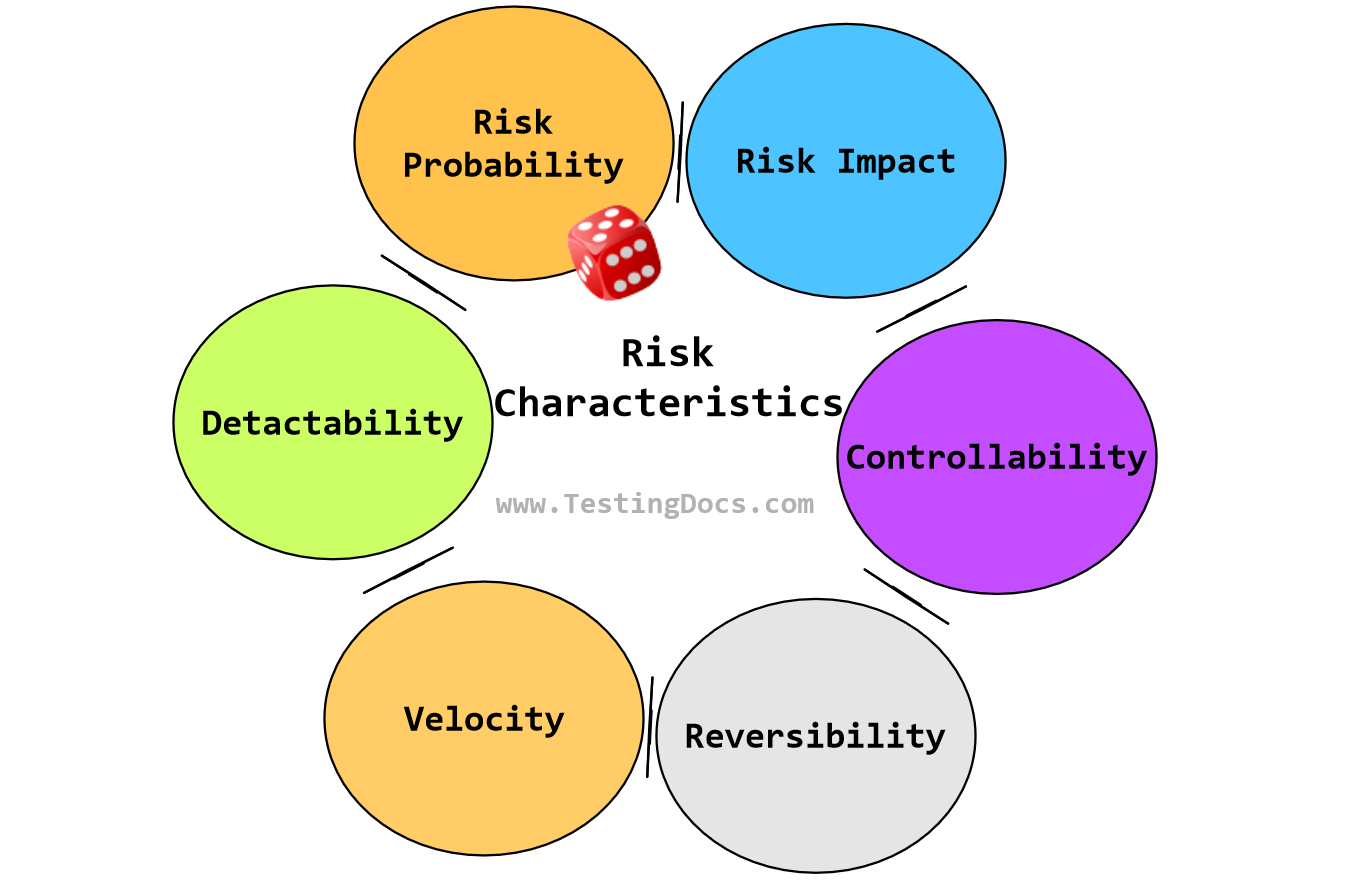Risk Characteristics
Overview
Risk characteristics are also known as Risk factors. Risk characteristics are the various factors and attributes associated with the assessment and analysis of risks in a particular context or domain. These characteristics help in understanding the nature, severity, and probability of risks, which are essential for effective risk management.
Risk Characteristics
Risk characteristics are as follows:
- Probability
- Impact
- Controllability
- Detectability
- Interdependency
- Reversibility
- Velocity
- Immediacy
Probability
Probability refers to the likelihood or chance that a specific risk event or scenario will occur. It can be assessed on a scale ranging from highly unlikely to highly probable.
Impact
The impact is the loss or the extent of the loss or consequences that a risk event can have if it materializes. It can be assessed on a scale ranging from low impact to high impact.

Controllability
Controllability refers to the degree to which a risk event can be controlled or mitigated. Some risks may be more controllable, meaning that measures can be taken to reduce their occurrence or impact, while others may be less controllable or uncontrollable.
Detectability
Detectability refers to the ease or difficulty in identifying or detecting a risk event before it materializes. Some risks may be easily detectable, while others may be difficult to identify until they occur.
Interdependency
Interdependency refers to the relationships and dependencies between risks. Some risks may be interconnected or have dependencies on other risks, which can affect their likelihood or impact.
Velocity
Risk Velocity refers to how quickly a risk event can materialize and have an impact. Some risks may have a high velocity occurring suddenly and with little warning, while others may have a slow velocity developing gradually over time.
Reversibility
Reversibility refers to the ease or difficulty in reversing or mitigating the impact of a risk event once it occurs. Some risks may be reversible, meaning that their impact can be mitigated or reversed with appropriate actions, while others may be irreversible or have long-term consequences.
Immediacy
Immediacy refers to the timeframe or timeline within which a risk event is likely to occur. Risk immediacy can be:
- Short-term
- Medium-term
- Long-term risk
It is important to understand these risk characteristics for effective risk management and to make informed decisions to minimize or mitigate risks.
More information:





